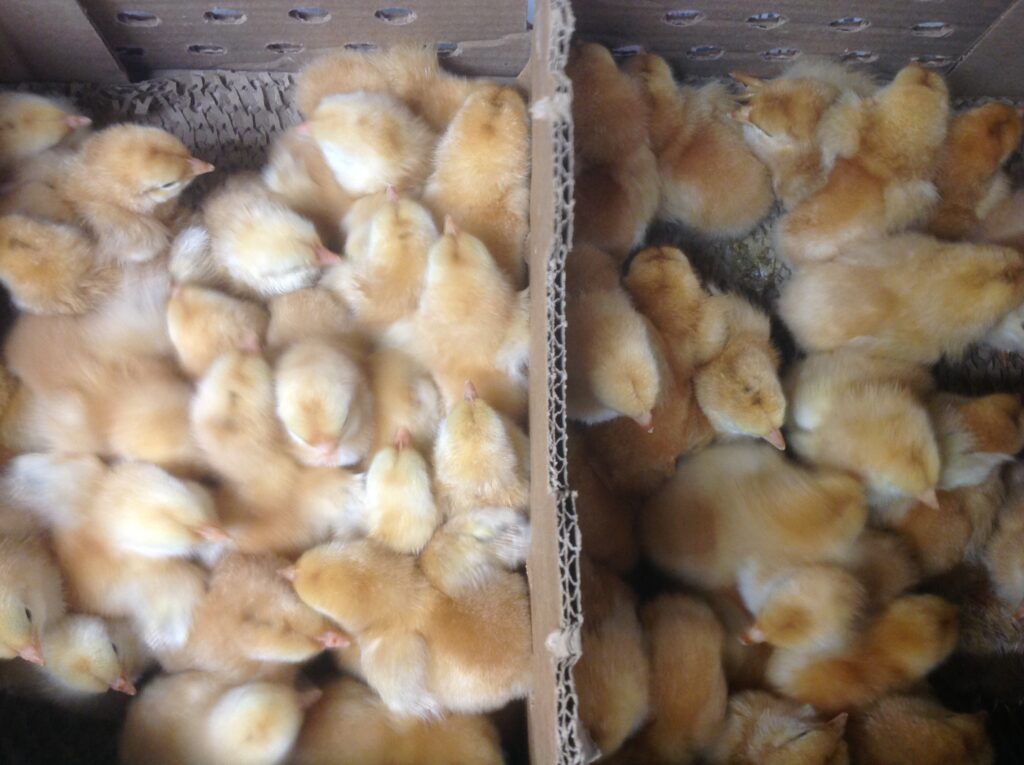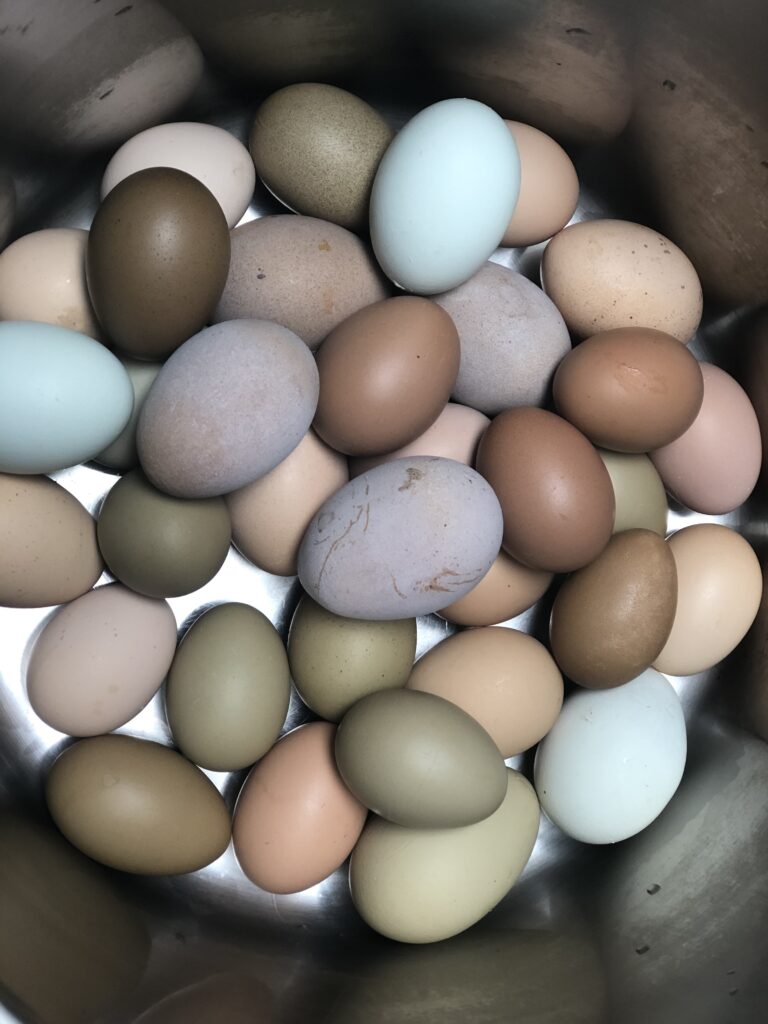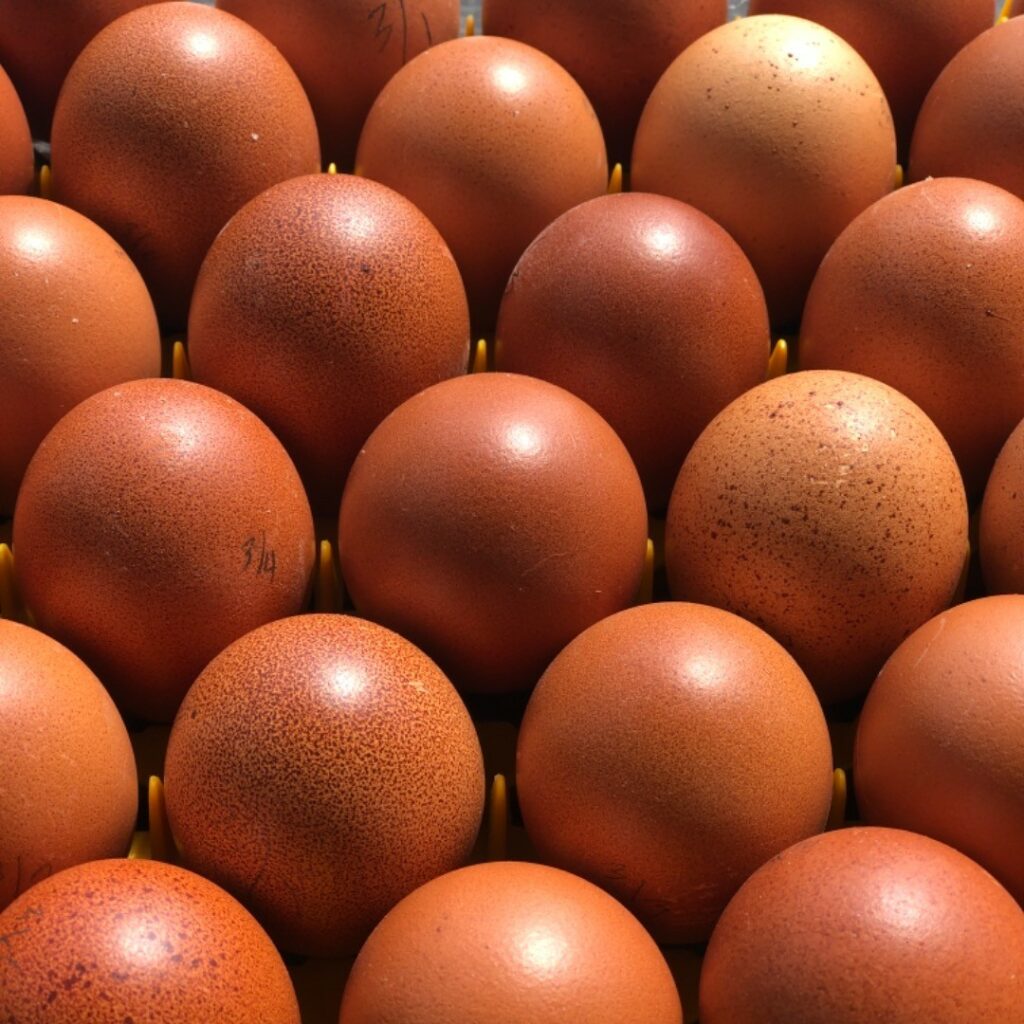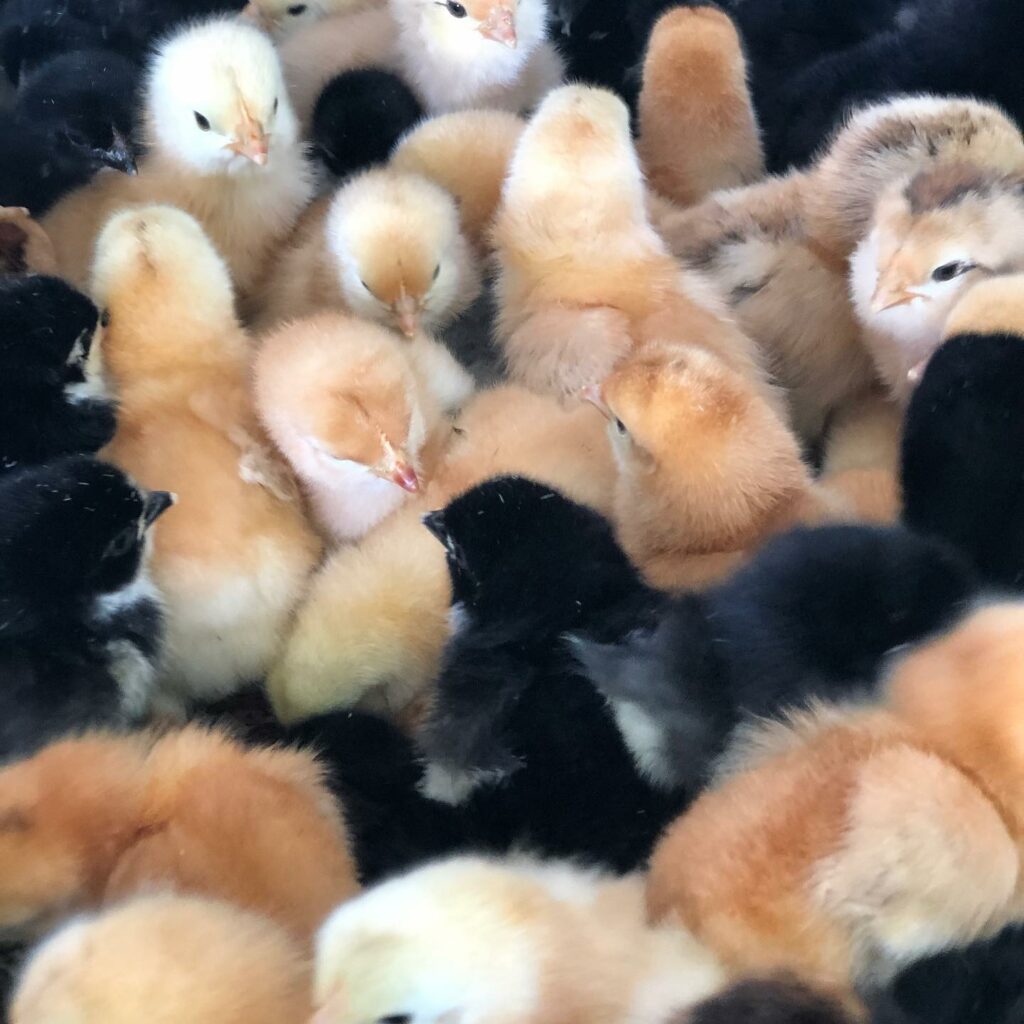

Chicks and Hatching Eggs
New Hampshires
We began breeding our first New Hampshire flock in 2017. We were fortunate to start with lines from within the Sustainable Poultry Network and breed a Halbach/ Reese line of chickens. Since then we have been able to focus on what we’d like to see in a dual purpose chicken. We are striving to raise a dark-feathered chicken who is good at foraging, who is predator savvy, and who fits into our mobile system of raising breeders and broilers. We’ve seen a big difference in body composition, most notably in the shape and size of the breasts.
Our New Hampshire broilers are served at the tables of Local Roots Restaurant and Bloom in Roanoke, Virginia.

A deeper explanation of our New Hampshires
In 2016 we were fortunate enough to get about 30 New Hampshire chickens from Jim Atkins of the Sustainable Poultry Network. Jim and Brent Bullock of King Family Farm in Bristol, TN worked with these birds for several years. Their New Hampshires were a cross between lines from Halbach Poultry Farm and Good Shepherd Ranch, called a Halbach/ Reese Cross.
Bramble Hollow Farm had wanted to work toward growing a meaty bird heritage breed bird that could be reproduced on small farms. We also needed a bird that could make good use of our mountainous terrain, thriving not only on pasture, but also in the forests of our farm. Our meat breed needed to be predator savvy too, as we located our free-and day-range poultry farm in the foothills of the Blue Ridge under the migratory path of thousands of hawks annually (oops!)
We took these New Hampshire and chose our first breeders.
In the years since 2016 we have grown our breeding operation and expanded to as many as five New Hampshire breeding families at one time. Recording keeping shows we hatched 400 New Hampshires in 2020. This growth has really allowed us to maximize the hybrid vigor of lines while focusing on our goals- primarily growing a meatier carcass and a good pasture/forest ranger.
Going forward in 2023 (now that we have such a wide variety of breeders to choose from) we’re looking forward to shifting our focus to more hands-on management. We’ll carry forward smaller breeding families for fewer breeders so that we can give each family and each hen and rooster more attention. I hope to really increase our knowledge of individual birds to refine our lines further.
One note: We do not breed to the American Poultry Association Standard of Perfection when selecting for our breeders. Instead, we are adapting the APA standards to our own needs. I select breeders with the goal of producing what we need for our farm- a meaty carcass on a Blue Ridge savvy bird!
Rainbow Egg Layers

Seeing different colored eggs in the daily eggs baskets brings us such joy. The beautiful colors really make what can become a daily chore something to look forward to. Seeing the beautiful eggs fills our hearts and eating them fills our tummies!
Black Copper Marans

The dark brown eggs from the Black Copper Maran are speckled and varied in shade. These ladies tend to lay the darkest eggs toward the beginning and middle of their lay cycle and then lighter brown as the season goes on.
Blue Eggers

We cross blue eggers with blue eggers to achieve various shades of blue and green eggs. Some of these F1 crosses lay brown eggs.
Then we cross these blue and green layers with blue and green layers for F2 crosses and with Black Copper Marans for the olive eggers below.
Olive Eggers
Olive eggers are the F1 and F2 crosses from above with a Black Copper Maran males to create aa beautiful array of green, olives and beige colored eggs.
